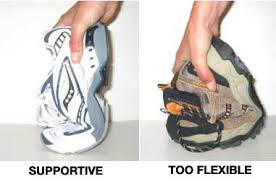I've found in my practice I often get asked about appropriate shoe gear. This question is usually brought up after we address the primary compliant for the office visit. Occasionally patients bring all of their current shoes to the appointment and asks for me to take a look. I'm always happy to look at the shoes and offer some advice. Here are some of the most common questions related to shoes I'm asked:
"What shoes should I wear before and after surgery?"
"How do I know if I'm buying a good pair of shoes or not?"
"Should I purchase sport-specific shoes?"
"Are there shoes made for my condition?"
REMINDER: Every person has a unique foot and ankle structure and gait. The below are general recommendations which can vary based on patient foot and ankle types and current problems. I recommend everyone be evaluated by a licensed professional for patient specific recommendations.
Whether a professional athlete, weekend warrior, young athlete, or child if you participate in a sport routinely I recommend sport specific shoes:
"What shoes should I wear before and after surgery?"
"How do I know if I'm buying a good pair of shoes or not?"
"Should I purchase sport-specific shoes?"
"Are there shoes made for my condition?"
REMINDER: Every person has a unique foot and ankle structure and gait. The below are general recommendations which can vary based on patient foot and ankle types and current problems. I recommend everyone be evaluated by a licensed professional for patient specific recommendations.
Whether a professional athlete, weekend warrior, young athlete, or child if you participate in a sport routinely I recommend sport specific shoes:
I have no shoe brand affiliation and shoe price does not always correlate with quality. For a basic evaluation of the quality and structure of a shoe look for two things:
1. From the side with force the shoe should bend just behind the toes in the forefoot. A shoe without support with force will bend throughout and may even fold on itself.
1. From the side with force the shoe should bend just behind the toes in the forefoot. A shoe without support with force will bend throughout and may even fold on itself.
2. From the top of the shoe twisting from side to side there should be minimal movement. With force the shoe should not simply twist on itself.
Anatomy of a Shoe!
Anatomy of a Shoe!
I hope this post helps patients look beyond advertising and style when purchasing shoes. Feel free to contact me by office appointment or email for any specific questions. Now get out there and enjoy this nice Spring weather!



 RSS Feed
RSS Feed